
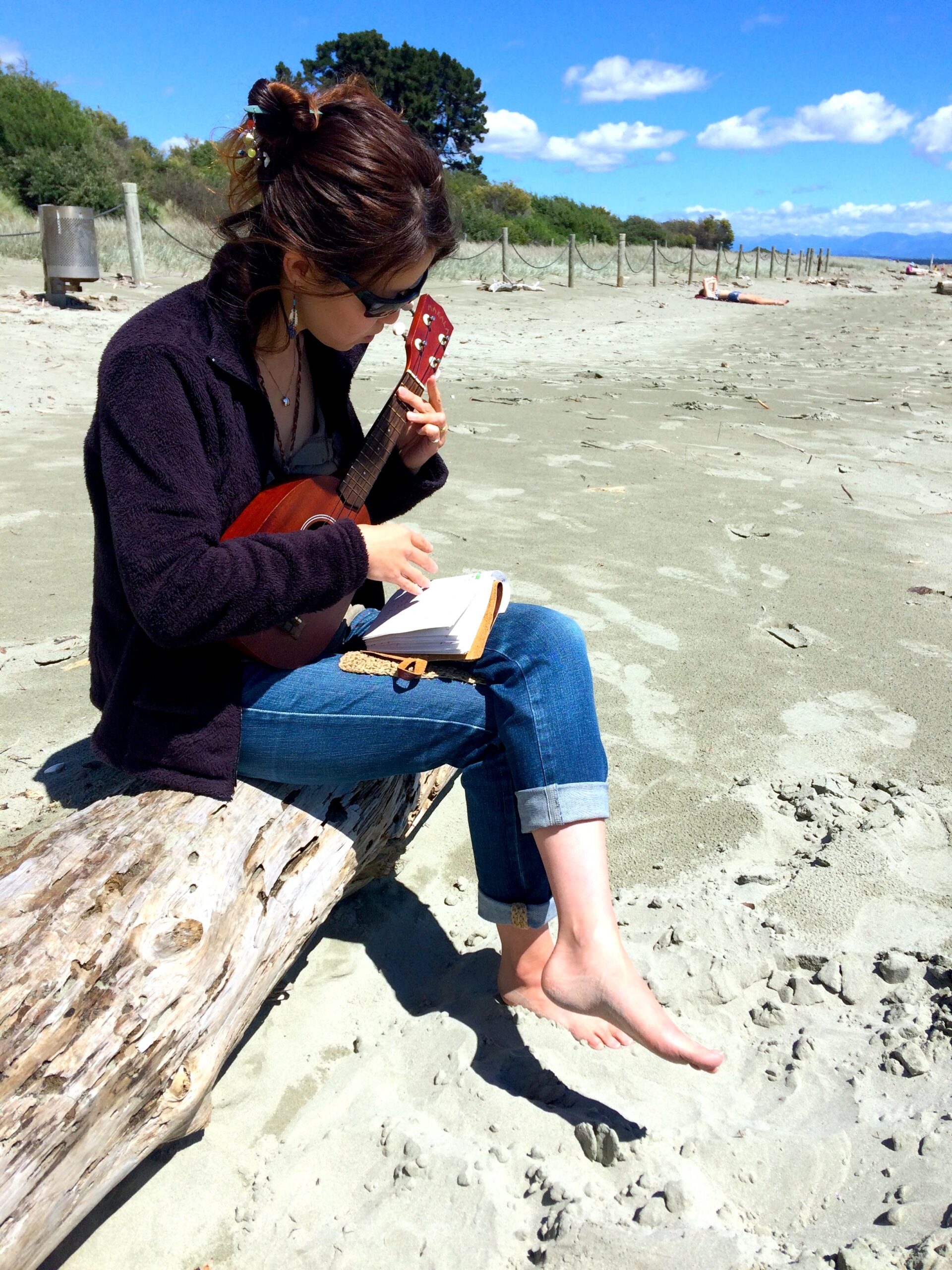
Tokyo’s fine dining scene offers everything from traditional kaiseki to modern fusion.
This guide highlights top restaurants for Wagyu bee, sushi, and robatayaki, plus venues near landmarks like Meiji Shrine and Nezu Shrine.
Whether you prefer private rooms, rooftop dinners, or seasonal tasting menus, Tokyo delivers unforgettable luxury dining experiences.
Fine Dining Restaurants in Tokyo Featuring Wagyu, Kaiseki, and More
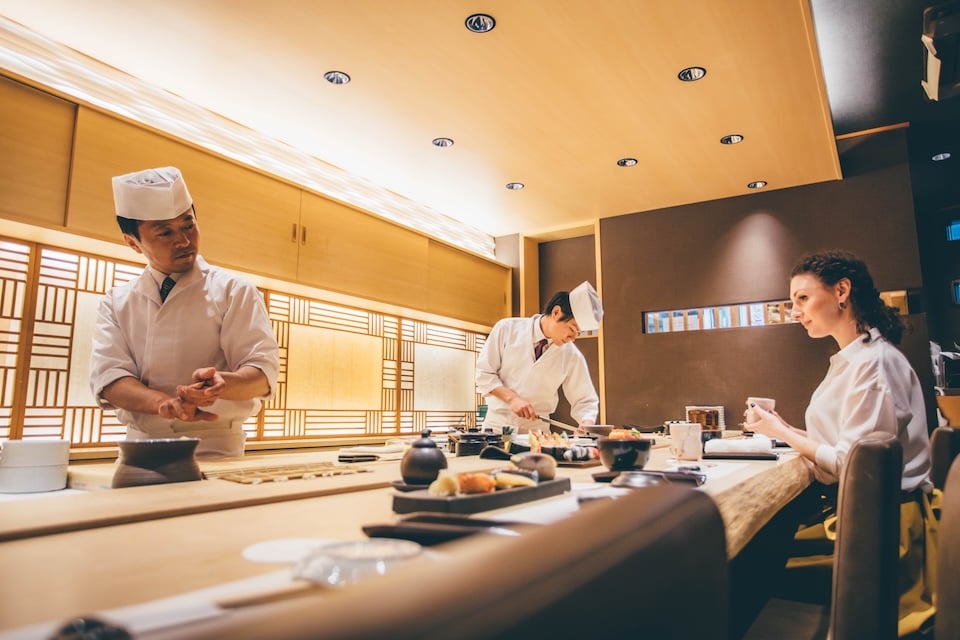
From melt-in-your-mouth Wagyu to artfully crafted kaiseki, Tokyo’s high-end dining offers world-class flavors and refined ambiance.
These renowned restaurants combine exquisite cuisine with authentic hospitality, perfect for impressing international VIP guests.
Wagyu Kaiseki at Kanda (Minato Ward)
Three-Michelin-starred Kanda in Minato Ward offers a refined kaiseki dining experience, featuring Awa beef (premium Wagyu from Tokushima) and seasonal ingredients.
Led by Chef Hiroyuki Kanda, the omakase menu celebrates subtle, natural flavors, from perfectly cooked rice to delicately grilled Wagyu.The intimate setting, with limited seating, ensures an exclusive and personal dining atmosphere.
Basic Store Information – Kanda
| Item | Details |
| Name | Nihonryori Kanda |
| Address | 1F Toranomon Hills Residential Tower, 1-1-1 Atago, Minato-ku, Tokyo |
| Cuisine | Japanese (Kaiseki) – 3 Michelin Stars |
| Hours | Dinner only; from 5:00 p.m. (reserve 1 month ahead) |
| Dress Code | Smart casual or formal |
| Reservations | Essential |
| Official Site | Nihonryori Kanda Official |
Sushi and Seasonal Tasting at Den (Jingumae)
Two-Michelin-starred Den in Jingumae, also holding a Michelin Green Star, blends creativity with fine dining.
Chef Zaiyu Hasegawa reimagines kaiseki with playful dishes like foie gras monaka and “Dentucky Fried Chicken,” alongside seasonal sashimi and inventive wagyu creations.
The warm, engaging service makes it a standout for international visitors.
Basic Store Information – Den
| Item | Details |
| Name | Den |
| Address | 2-3-18 Jingumae, Shibuya-ku, Tokyo |
| Cuisine | Modern Japanese (Kaiseki) – 2 Michelin Stars + Green Star |
| Hours | Dinner only; from 6:00 p.m. (reserve 1 month ahead) |
| Dress Code | Smart casual |
| Reservations | Essential |
| Official Site | Den Official |
Robatayaki Excellence at Roppongi Inakaya
Roppongi Inakaya delivers a vibrant robatayaki dining experience where guests select from fresh seafood, Wagyu beef, and seasonal vegetables displayed on ice. Grillmasters cook the dishes over charcoal and present them with dramatic flair on large wooden paddles.
Known for welcoming dignitaries including U.S. President Donald Trump, Inakaya pairs premium ingredients with a lively, rustic ambiance. Counter seating surrounds the open grill, offering a theatrical dining atmosphere that appeals to VIPs seeking a more engaging alternative to formal kaiseki.
Advance reservations are essential.
Basic Store Information – Roppongi Inakaya (East Branch)
| Item | Details |
| Name | Roppongi Inakaya |
| Address | 1F Azabu Arrow Building, 3-14-7 Roppongi, Minato-ku, Tokyo 106-0032, Japan |
| Phone | +81 3-3408-5040 |
| Cuisine | Robatayaki – Seafood, Wagyu, Seasonal Vegetables |
| Hours | Daily 5:00 p.m. – 11:00 p.m. (Last order 10:30 p.m.) |
| Seating | Counter around open grill |
| Notable | English menu, celebrity guests, lively setting |
| Official Site | Roppongi Inakaya Official |
Kushiyaki Dining with a View at Torishiki Tokyo
Torishiki, near Meguro Station, is one of Tokyo’s most exclusive yakitori restaurants, seating only 12 guests. Chef Yoshiteru Ikegawa transforms kushiyaki into an art form, grilling premium chicken cuts over Kishu binchōtan charcoal in full view of diners.
The omakase menu progresses from delicately seasoned skewers to richer flavors, featuring highlights such as crispy chicken wings, savory tsukune, and seasonal vegetables. With its intimate counter setting and masterful precision, Torishiki is a destination for fine dining enthusiasts.
Reservations open one month in advance, and proper etiquette is expected.
Basic Store Information – Torishiki
| Item | Details |
| Name | Torishiki |
| Address | Near Meguro Station, Tokyo, Japan |
| Cuisine | Kushiyaki – Premium Chicken Skewers |
| Seating | 17-seat counter |
| Notable | Omakase menu, seasonal ingredients, exclusive reservations |
| Official Site | Torishiki-ichimon Official |
Fine Dining Near Tokyo’s Iconic Landmarks

One of the joys of dining in Tokyo is pairing gourmet experiences with sightseeing. Many top restaurants are located near major landmarks, allowing you to explore sites like Meiji Shrine or Nezu Shrine and end the day with a world-class meal.
From hotel dining rooms with garden views to hidden spots in historic neighborhoods, these venues offer a seamless blend of culture and cuisine—perfect for hosting VIP visitors.
Elegant Dining Near Meiji Shrine
Meiji Shrine (明治神宮, Meiji Jingū) in Shibuya is renowned for its peaceful forest paths and traditional ceremonies. Just minutes away, Narisawa in Minami-Aoyama offers two-Michelin-starred “Satoyama cuisine,” celebrating Japan’s natural environment with avant-garde flair. Signature dishes may include forest-foraged broths or bread baked tableside in stone pots.
For a more traditional setting, Meiji Kinenkan—a historic banquet hall near the shrine—serves refined kaiseki at Hamagiku, with serene garden views ideal for celebrations. Meanwhile, nearby Florilège in Jingumae presents inventive French-Japanese fusion, with counter seating around an open kitchen—perfect after exploring Harajuku and Omotesando.
Hidden Gems Close to Nezu Shrine
Nezu Shrine (根津神社, Nezu Jinja) in Bunkyo Ward charms visitors with its vermilion torii tunnel and seasonal azalea gardens, while the surrounding Yanesen area retains an old-town feel with intimate dining spots. A hidden kaiseki restaurant like “Yuyake Dandan” offers seasonal multi-course meals in a renovated townhouse—think spring bamboo shoots, summer ayu, or autumn matsutake. For Western cuisine, a French-Japanese bistro in a historic machiya might serve wagyu Burgundy stew or foie gras marinated in miso.
These venues are small, often seating under 20 guests, so reservations via a local concierge are recommended. Pair your visit with Ueno Park’s museums before strolling to dinner under the neighborhood’s nostalgic street lamps, which add to the timeless charm of Yanesen.
Roppongi’s Luxury Restaurants and Nightlife Pairings
Roppongi is renowned for combining luxury dining with vibrant nightlife, making it ideal for an evening itinerary.
Start with a Michelin-starred dinner—options include Azabu Kadowaki’s truffle-infused kaiseki, Sushi Masuda’s omakase, or The Ukai Tei’s Wagyu teppanyaki in Tokyo Midtown.
This area allows visitors to enjoy world-class dining in one place, as many venues are inside Roppongi Hills or Midtown, ensuring a smooth transition from dinner to nightlife.
After dining, head to the Ritz-Carlton Tokyo’s 45th-floor bar for panoramic city views, or enjoy live jazz at Billboard Live Tokyo.
Roppongi’s compact and walkable layout makes it easy to move between fine dining, bars, and lounges, giving guests a seamless luxury night out.
Dining Spots Perfect After Visiting Art Museums
Tokyo’s art districts offer excellent dining options. Near Mori Art Museum, The Moon serves French-Japanese fusion with sweeping skyline views. The National Art Center houses Brasserie Paul Bocuse Le Musée, offering French classics in an architectural landmark. Around Nezu Museum, choose between stylish Italian-Japanese spots like Aoyama Essenza or high-end sushi in chic Omotesando.
These pairings let guests reflect on art over exceptional cuisine , keeping the day’s aesthetic experience alive.
Explore Tokyo’s Fine Dining by Genre
Tokyo offers an extraordinary range of fine dining—from traditional kaiseki and premium Wagyu beef to robatayaki grills and creative fusion. Choosing by genre ensures a tailored experience , whether you want classic elegance or modern flair.
Kaiseki Cuisine: Seasonal Artistry
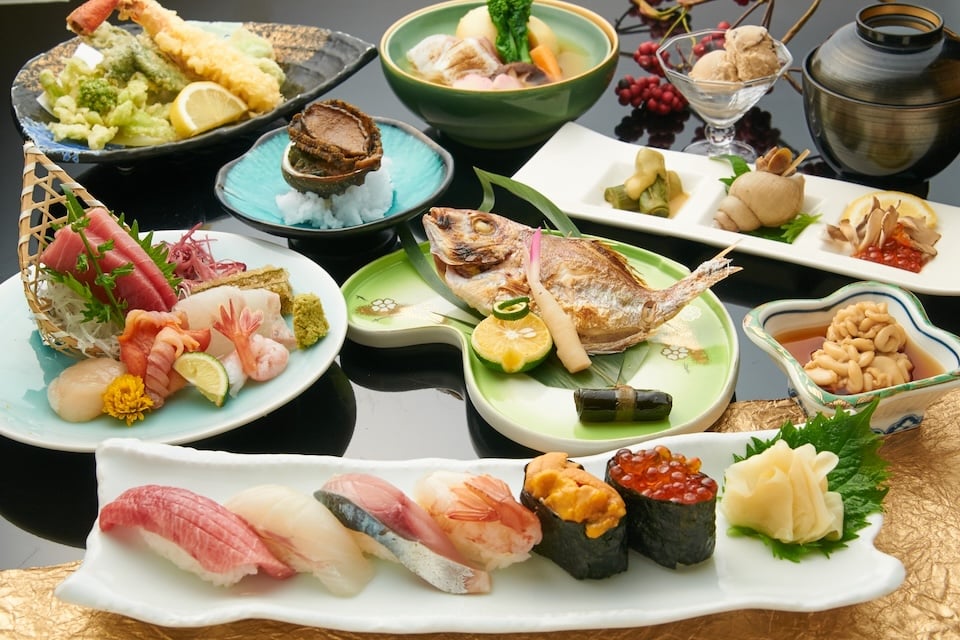
Kaiseki ryōri is Japan’s most refined culinary tradition, offering 8–12 seasonal courses that embody shun—the peak flavor of the season. Each dish is meticulously presented on tableware reflecting the time of year, creating a harmonious balance of taste and aesthetics.
In Tokyo, you’ll find both classic kaiseki, with dishes like sashimi, simmered vegetables, and miso-glazed fish, and modern interpretations that feature Western techniques or wine pairings. Whether in a serene tatami room or a sleek city-view setting, kaiseki delivers a multi-sensory journey into Japanese culture.
| Restaurant | Location | Style | Highlights | Price Range | Reservation | Hours |
| Ishikawa | Kagurazaka | Traditional | 3 Michelin stars; seasonal seafood & vegetables | $$$$ | Required (months ahead) | Dinner: 5:30 PM–10:00 PM |
| Ren | Azabu | Innovative | Kyoto-trained chef; modern twist on classics | $$$$ | Recommended | Dinner: 6:00 PM–10:30 PM |
| Kitaohji Akasaka Saryo | Akasaka | Vegetarian/Vegan | Plant-based menu; bonito-free dashi | $$$ | Recommended |
Robatayaki and Kushiyaki: Flame-Grilled Perfection
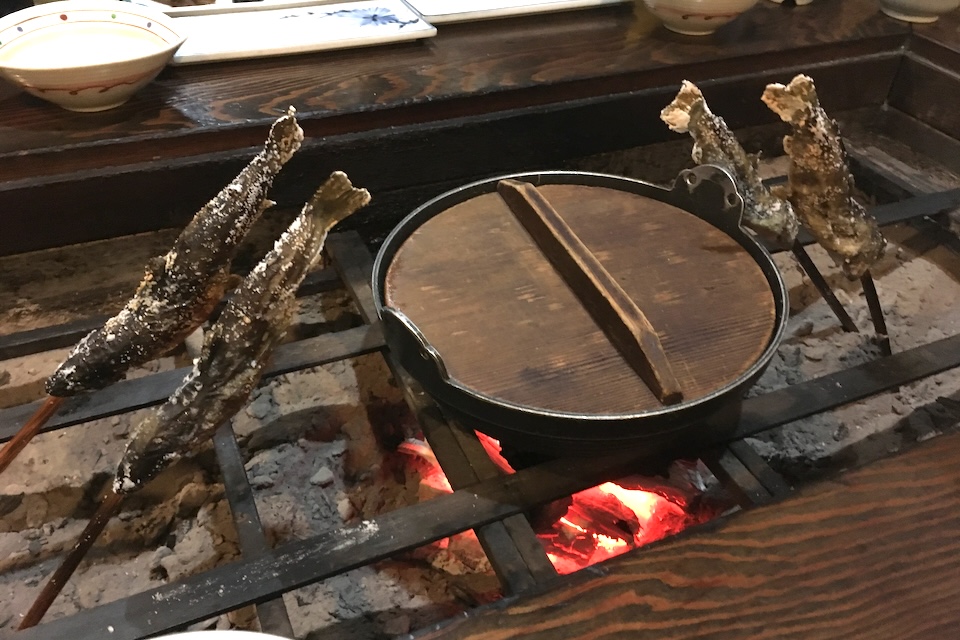
Robatayaki (炉端焼き) and kushiyaki (串焼き) offer the primal pleasure of charcoal grilling elevated to fine dining. Robatayaki, originating from northern Japan, features an open grill before guests, where premium ingredients—A5 Wagyu skewers, Hokkaido king crab, or sweet potatoes—are cooked with precision over binchōtan charcoal. Chefs balance heat like a chess game, delivering each item with theatrical flair.
Kushiyaki covers skewered meats, seafood, and vegetables, with yakitori as its star. At high-end spots like Torishiki, jidori chicken is grilled to perfection—wings crisp, liver silky, heart tender—often paired with aged tare sauce and premium sake.
The recommended reason is the way modern venues elevate skewers with luxury ingredients such as truffle or foie gras, blending rustic tradition with haute cuisine.
| Restaurant | Location | Specialty | Highlights | Price Range | Reservation | Hours |
| Inakaya | Roppongi | Robatayaki | Premium seafood & meats, served via paddles | $$$ | Recommended | Dinner: 5:00 PM–11:00 PM |
| Torishiki | Meguro | Yakitori | Michelin-starred; jidori chicken mastery | $$$ | Required (months ahead) | Dinner: 5:00 PM–11:00 PM |
| Kushikatsu Arakiyama* | Ginza | Luxury Skewers | Truffle tomato, Wagyu-foie gras skewers | $$$$ | Recommended | Dinner: 6:00 PM–10:00 PM |
(*Name for illustrative purposes)
Wagyu Specialties: A5-Grade Dining Experiences
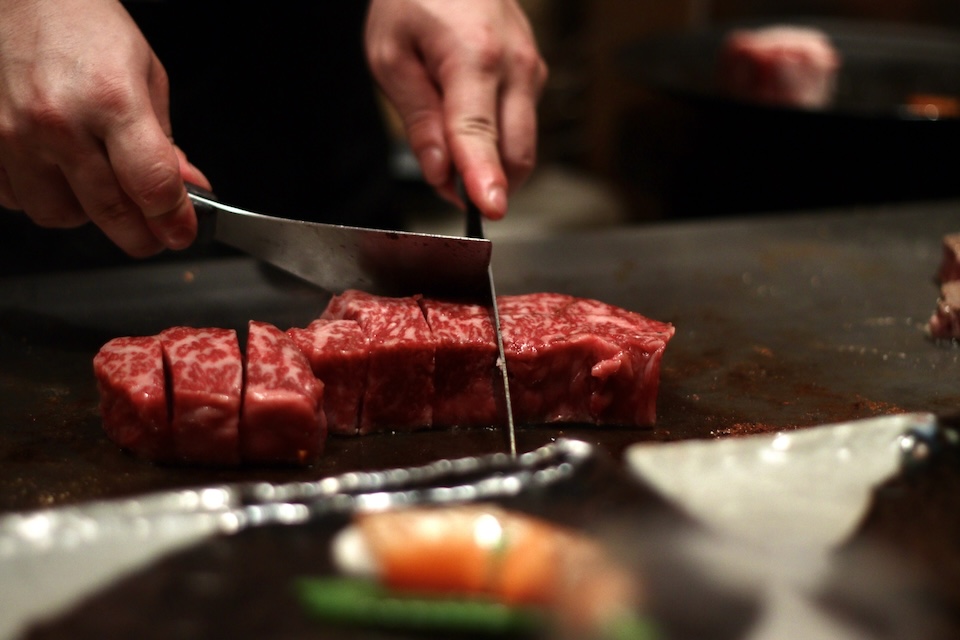
rich marbling and melt-in-your-mouth texture make A5 Wagyu one of Japan’s most sought-after delicacies.
Tokyo offers countless ways to savor it—from teppanyaki steakhouses to shabu-shabu, sukiyaki, and Wagyu-focused kaiseki.
At Ginza Ukai-Tei, chefs sear thick Wagyu steaks on a hot griddle, pairing them with seasonal vegetables and wine. Imafuku in Azabu serves Michelin-starred sukiyaki, where thin slices cook briefly in sweet soy broth, often dipped in raw egg.
Yakiniku Jumbo elevates table-grilled Wagyu with rare cuts and private dining rooms for VIP guests.
| Restaurant | Location | Style | Highlights | Price Range | Reservation | Hours |
| Ginza Ukai-Tei | Ginza | Teppanyaki | Art Nouveau decor; choice Wagyu cuts | $$$$ | Required | Lunch/Dinner |
| Imafuku | Azabu | Sukiyaki | Michelin-starred; A5 beef with seasonal sides | $$$$ | Required | Dinner |
| Yakiniku Jumbo | Various | Yakiniku | Rare cuts; private grill rooms | $$$ | Recommended | Lunch/Dinner |
Sushi Fine Dining: Intimate Counters and Omakase Magic
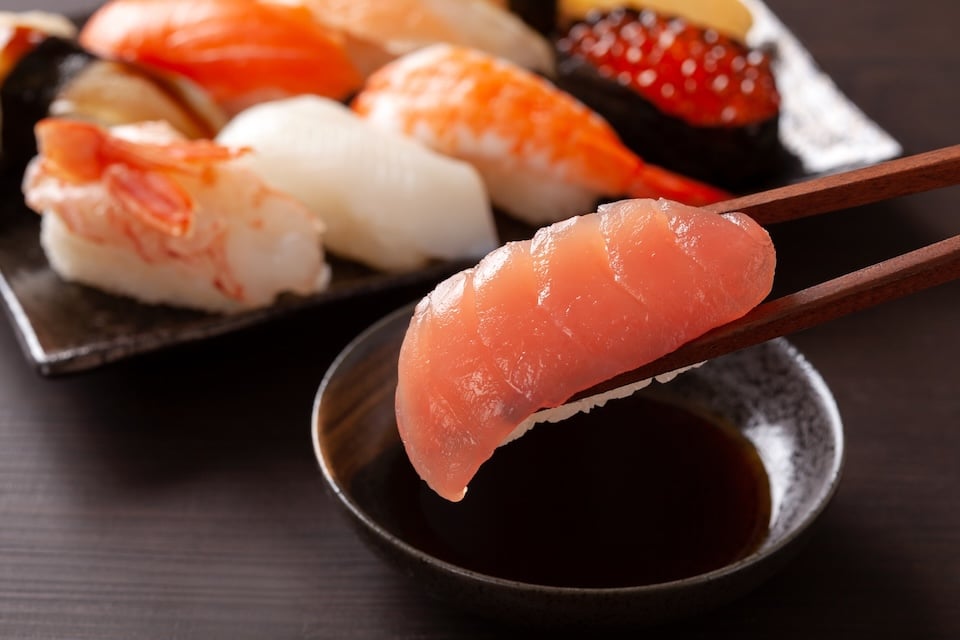
Tokyo is the world’s sushi capital, home to intimate counters where chefs craft an omakase progression—“I leave it to you”—for just a handful of guests. Edomae-style sushi highlights seasonal seafood from Toyosu Market, balanced with vinegared rice often seasoned with red vinegar.
Each piece may feature premium neta such as Hokkaido uni, silky chutoro, or delicately cured kohada, brushed with house-made soy glaze and served at the perfect temperature. The itamae’s precision—from rice shaping to wasabi placement—elevates sushi to an art form, while the intimate setting encourages engagement, with chefs explaining ingredients or tailoring pieces to guests’ preferences.
From traditional purist styles to contemporary twists with yuzu zest or rock salt, Tokyo offers a spectrum of Michelin-starred and hidden-gem sushi experiences. Though prices often range from ¥20,000–¥40,000 ($140–$280), many consider it the highlight of a Tokyo trip—an immersive journey into Japanese culture through each perfect bite.
Modern European–Japanese Hybrid Menus
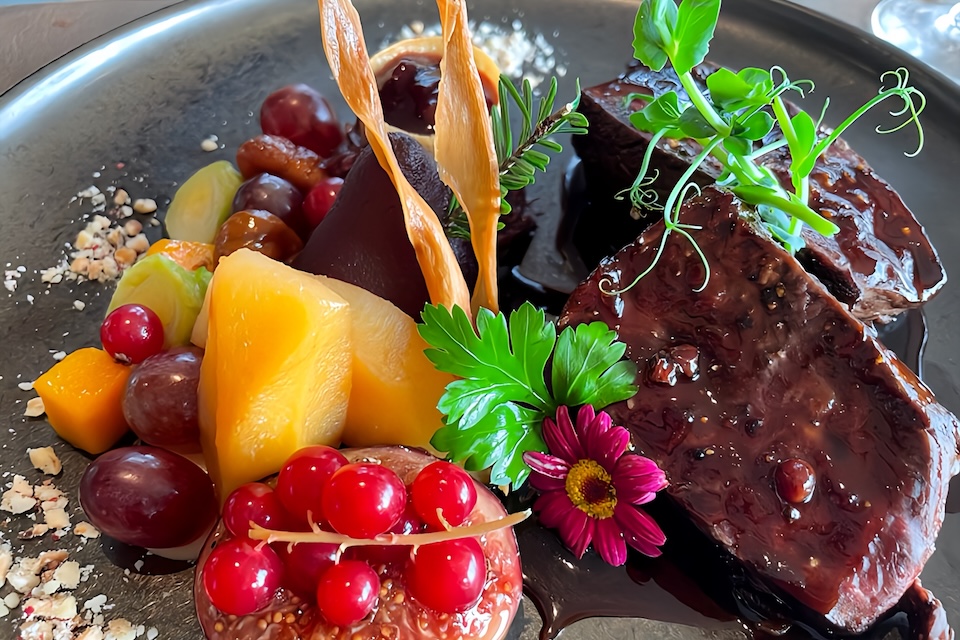
Tokyo’s dining scene thrives on innovation, with chefs blending French, Italian, and Japanese flavors into refined tasting menus. Guests may savor handmade pasta with sea urchin, foie gras brightened by yuzu, or local seafood prepared in classic French styles. Restaurants like Narisawa, Den, and Florilège excel not only in flavor but also in artful plating and storytelling, often highlighting sustainability. Italian-Japanese kitchens such as Il Ristorante Luca Fantin also showcase pristine local produce, while some chefs defy categorization with boundary-breaking creations.
What makes these experiences special is the fusion of Western fine dining structure with Japanese seasonality, precision, and hospitality. Diners also enjoy wine and sake pairings served side-by-side, creating a dynamic balance that few cities in the world can offer. These hybrids reflect Tokyo’s cosmopolitan character, where global inspiration meets Japanese artistry to deliver experiences found nowhere else.
Exclusive Dinner Experiences in Tokyo’s Fine Dining Scene
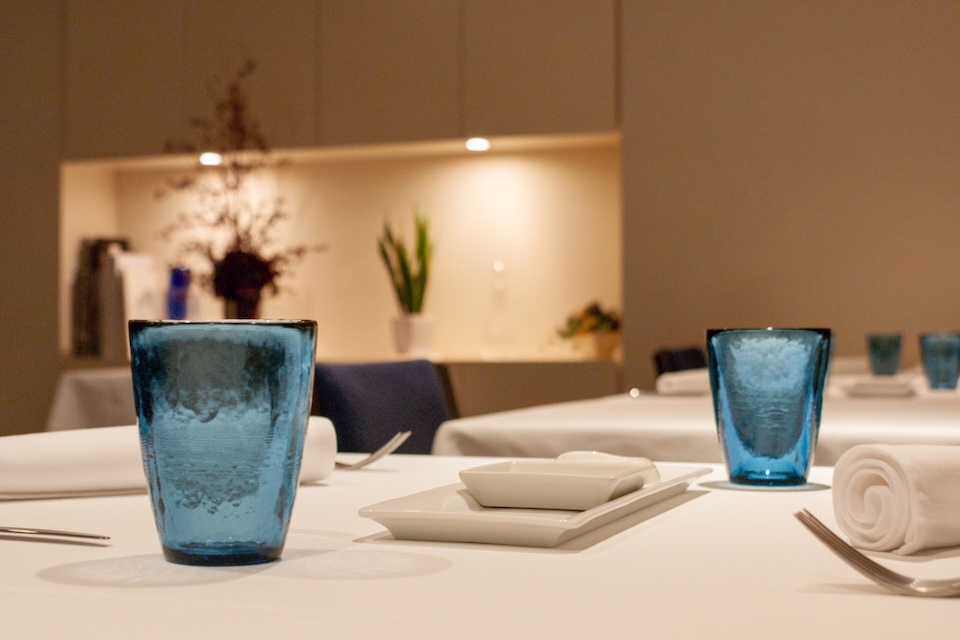
Tokyo’s high-end dining is more than just great food—it’s about privacy, luxury, and unforgettable settings.
From secluded private rooms to chef’s tables and rooftop views, these experiences turn a meal into something extraordinary.
Private Rooms and Chef’s Tables
Private rooms (koshitsu) are perfect for VIPs, offering full privacy and tailored service.
Examples include Kitaohji Akasaka Saryo with 28 rooms, or Mandarin Oriental’s Signature chef’s table for up to 8 guests. Sushi bars may offer exclusive counter buyouts, while Tapas Molecular Bar provides interactive tasting menus right at the counter.
Rooftop Restaurants with Panoramic Views
Tokyo’s skyline dining is unforgettable. New York Grill (Park Hyatt) offers 52nd-floor views, while Bellustar Tokyo features an outdoor terrace on the 45th floor.
Two Rooms Grill & Bar provides open-air cityscapes, and Sky Restaurant 634 serves “Tokyo cuisine” from Japan’s highest dining spot. Dining high above the city offers a unique blend of fine cuisine and breathtaking panoramas, turning every meal into a memorable experience.
| Facility Name | Cuisine | Special Feature | Seats | Reservation |
| Kitaohji Akasaka Saryo | Japanese Kaiseki | 28 private rooms | Varies | Required |
| Signature (Mandarin Oriental) | French | Chef’s table in kitchen | 8 | Required |
| Tapas Molecular Bar | Molecular Gastronomy | Interactive counter menu | 8 | Required |
| New York Grill (Park Hyatt) | Contemporary / Steak | 52nd-floor city view | Large | Recommended |
| Bellustar Tokyo | French-Japanese | Outdoor terrace lounge | Varies | Recommended |
| Two Rooms Grill & Bar | Contemporary Grill | Outdoor rooftop terrace | Varies | Recommended |
| Sky Restaurant 634 | French-Japanese | 1,132 ft above ground | Varies | Required |
Michelin-Starred Dining with Seasonal Menus
Tokyo holds the world’s highest number of Michelin-starred restaurants, many offering menus that shift with the seasons. From spring’s sansho sprouts to autumn’s matsutake mushrooms, each visit can be a new experience.
Popular spots like Kanda or Quintessence adapt their dishes throughout the year, making repeat visits rewarding. For VIPs, these venues deliver not only fine cuisine but also intimate settings and exceptional service—often requiring months-ahead reservations.
Reservation-Only Spots for VIP Hosting
Tokyo has a hidden network of reservation- or invite-only venues perfect for VIP hosting. Legendary sushi counters like Sukiyabashi Jiro or Sushi Saito, exclusive steakhouses, and historic ryotei offer privacy, prestige, and fully customized omakase—often with no signage and entry by referral.
Access usually requires top-tier concierge or local connections, ensuring a discreet, status-enhancing dining experience.
Customizable Dining & Cultural Packages for Visitors
For many foreign visitors, the ultimate Tokyo experience combines both cuisine and culture – not only do they want to taste Japan, they want to live it.
Recognizing this, some companies and tour organizers have created special packages merging fine dining with traditional activities. These experiences are tailored for tourists, especially VIP travelers seeking a deeper connection with Japanese traditions in a convenient, customizable format.
Tea Ceremony and Kaiseki Dinner
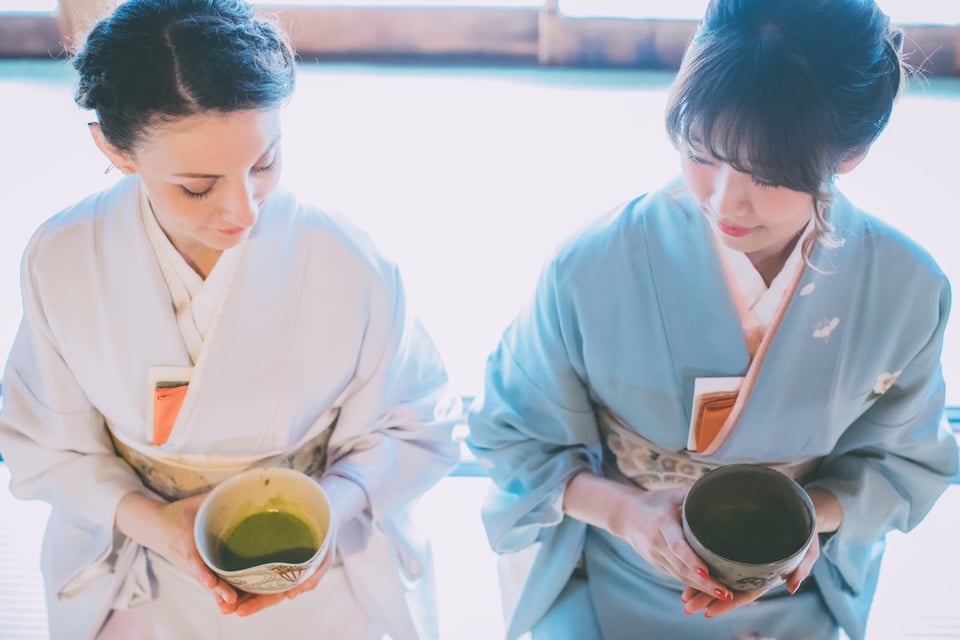
An authentic tea ceremony followed by a kaiseki dinner offers one of Tokyo’s most refined cultural experiences. Guests may begin by donning a kimono and entering a traditional tatami tea room, where a tea master prepares matcha with precise etiquette. The ceremony emphasizes harmony, respect, and seasonal beauty, offering visitors a calm and mindful introduction to Japanese aesthetics.
After this meditative start, guests move seamlessly to a nearby ryotei or on-site dining hall for a multi-course kaiseki meal. Many dishes echo the tea ceremony’s artistry—such as lacquerware similar to tea utensils or seasonal flowers matching the tea room décor. Venues like Happo-en in Shirokanedai host both experiences in one location, making it a time-efficient yet immersive option for VIP travelers seeking a deeper cultural connection.

Wagyu Dinner After Kimono Experience
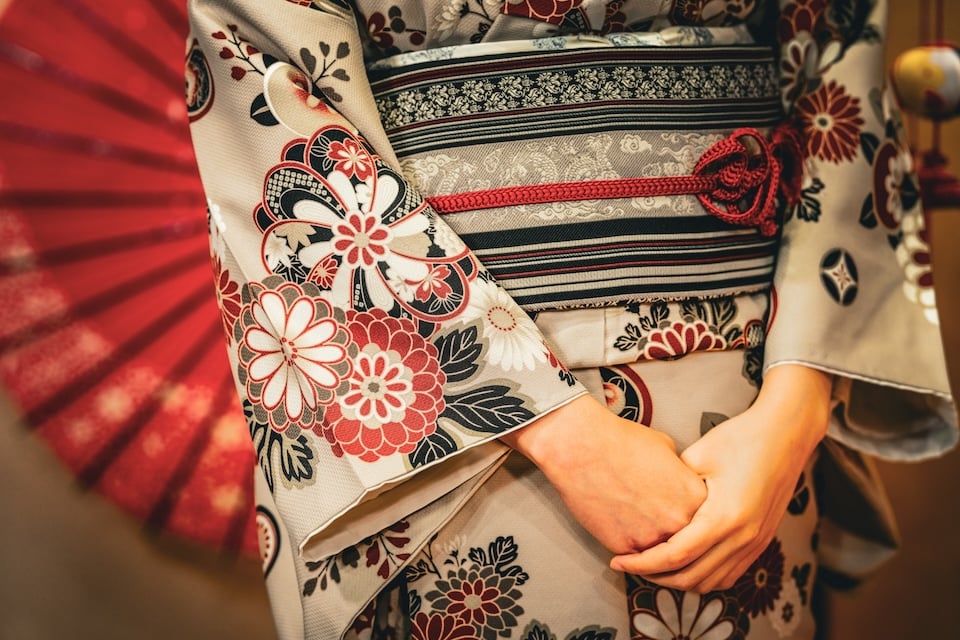
Dress in an elegant kimono (着物, kimono) with the help of professional dressers, then enjoy an evening of fine dining. After your transformation, step into a private room at a renowned wagyu (和牛, wagyū) restaurant, where premium cuts are served as kaiseki or steak. The pairing of silk kimono and melt-in-your-mouth wagyu offers a rare fusion of traditional attire and culinary luxury.
Many experiences take place in historic districts like Asakusa, where guests may combine a rickshaw ride or shrine visit with dinner at century-old establishments such as Asakusa Imahan (famous for sukiyaki since 1895). It’s a journey through time, blending Edo-period charm with modern VIP comfort.
-1-300x200.png)
Sushi Omakase and Sake Tasting
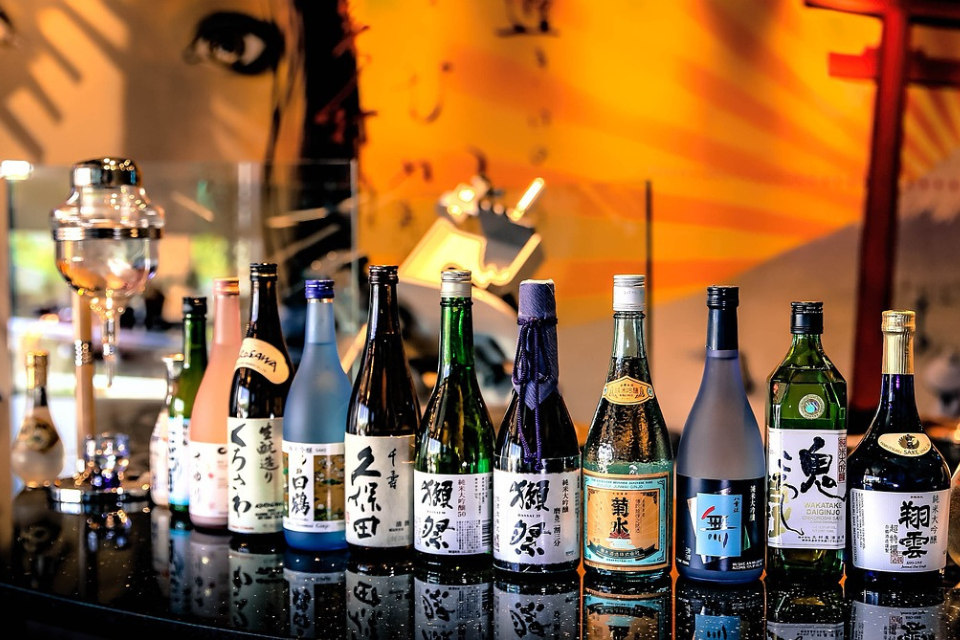
Discover Japan’s culinary artistry through a guided sake (酒, sake) tasting followed by a chef’s omakase (お任せ, omakase) sushi course. Begin with a certified sake sommelier introducing a range from delicate ginjo to robust junmai, helping you explore flavor profiles. Each nigiri is then paired with a carefully chosen sake to enhance its taste.
In luxury versions, the experience may include conversations with both the sushi chef and sake expert about seasonality, regional brewing, and pairing philosophy. Whether in a high-end Ginza sushi counter or a sake-specialty restaurant, this is an immersive way to appreciate two of Japan’s finest gastronomic traditions side by side.
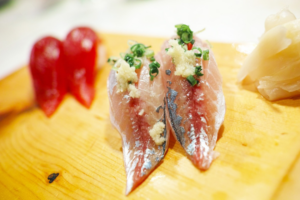
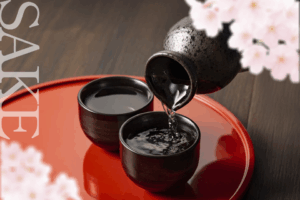
Dining After Sumo or Kabuki Experiences
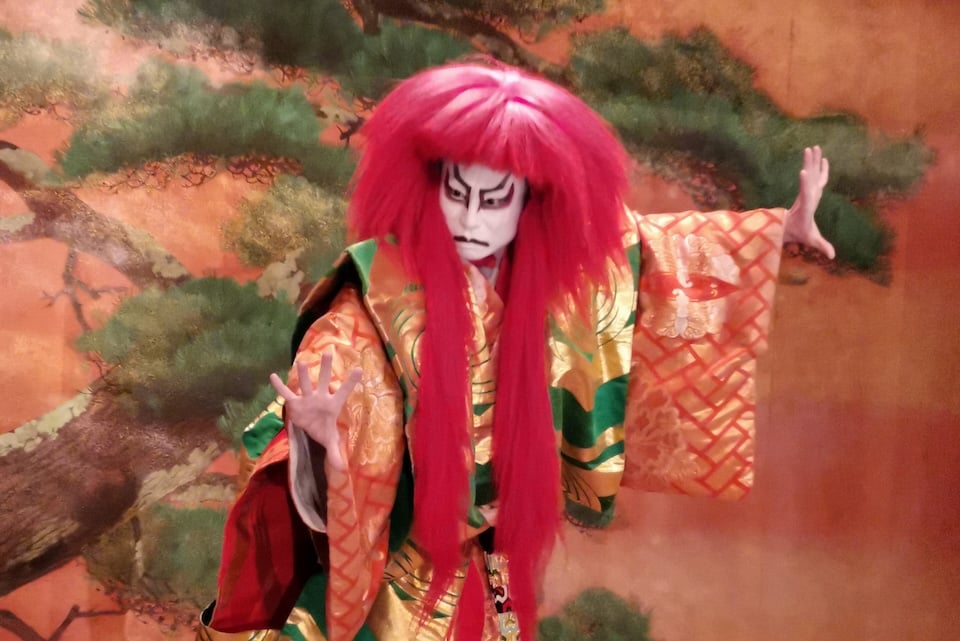
Pairing sumo or kabuki with a themed meal turns an evening into a complete cultural journey. After watching matches at Ryogoku Kokugikan, enjoy chanko nabe—a hearty yet healthy hotpot once favored by wrestlers—or savor robatayaki with premium seafood and meats. Some packages even include meeting retired wrestlers and joining lighthearted sumo demonstrations before dining.
For kabuki, choose a full kaiseki dinner at a nearby kappo or opt for an exclusive private performance arranged by MOTENAS JAPAN, complete with actor meet-and-greets, cultural explanations, and geisha entertainment. Whether you prefer the energy of the sumo ring or the elegance of the kabuki stage, combining these experiences with fine dining creates an immersive, unforgettable night.


Summary: Choosing the Right Fine Dining Restaurant in Tokyo
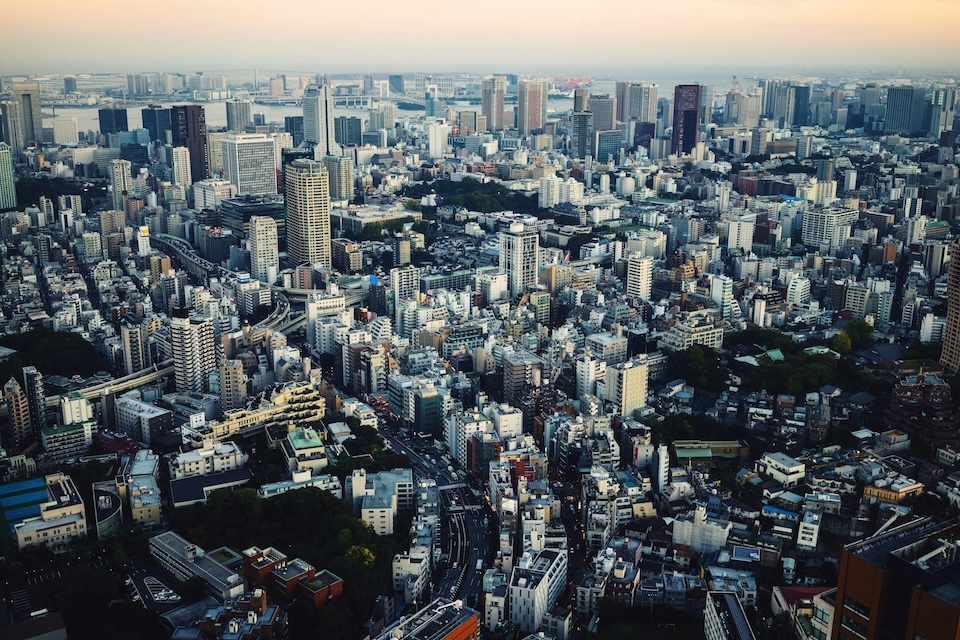
Tokyo’s fine dining ranges from Wagyu and sushi to skyline venues and cultural packages.Choosing the right spot means considering cuisine type, location, ambience, and booking strategy.These points will help you secure a memorable, tailored experience.
Cuisine, Location, and Atmosphere
Decide on the cuisine first – kaiseki, sushi, teppanyaki, or fusion. For cultural immersion, choose Japanese; for variety, try French- or Italian-Japanese blends.
Location should match your itinerary to avoid long travel. Ginza offers refinement, Aoyama creativity, Roppongi an international vibe. Private rooms suit discreet meetings, while counter seating offers chef interaction.
Reserve Early for Top Venues
Michelin-starred spots and famous counters book up months ahead. Use a hotel concierge or local contact for access, especially to invite-only venues.
Book early to request dietary accommodations, special seating, or tailored wine pairings. Be punctual—especially for omakase—where courses follow a set pace.
Combine Dining with Sightseeing for a Memorable Experience
Pair your fine dining choice with sightseeing to create a richer story—such as enjoying samurai history before dining in a former samurai residence, or visiting Shibuya Crossing before a tranquil garden kaiseki.
Consider cultural add-ons like a tea ceremony before dinner or a nightcap with a view. Restaurant-hopping—sushi for lunch, tempura for dinner—is also a uniquely Tokyo thrill. Plan ahead, use concierge services, and align cuisine, location, and ambience for an unforgettable dining experience.

旅をこよなく愛するWebライター。アジアを中心に16の国にお邪魔しました(今後も更新予定)。
ワーホリを機にニュージーランドに数年滞在。帰国後は日本の魅力にとりつかれ、各地のホテルで勤務。
日本滞在が、より豊かで思い出深いものになるように、旅好きならではの視点で心を込めてお届けします!





